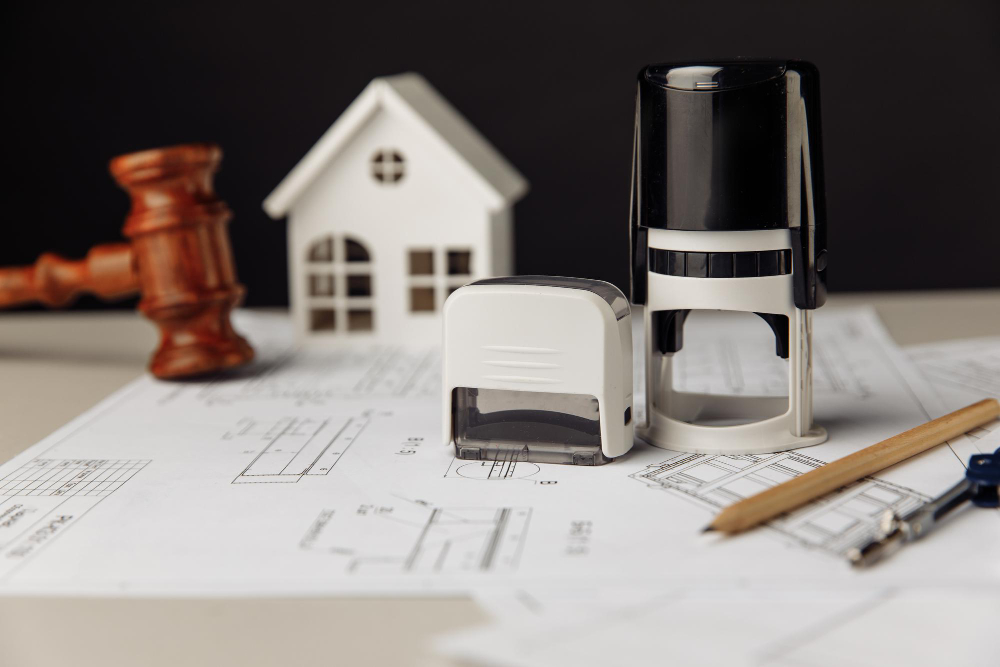In the bustling world of construction, where every nail, beam, and brick contributes to the creation of awe-inspiring structures, there exists a critical yet often overlooked process that serves as the backbone of it all – construction takeoffs. These takeoffs, often dubbed as the art and science of estimation, wield an incredible power to shape the destiny of a project, ensuring that dreams and blueprints transition seamlessly into tangible reality.

Imagine an architect’s blueprint as a musical score, a symphony of design and vision. Now, think of construction takeoffs as the orchestra conductor, meticulously counting the beats, assigning instruments, and orchestrating a harmonious performance. In this symphony of building, takeoffs are the notes that give life to the design, converting concepts into concrete figures and budgets.
But what exactly are construction takeoffs, and why are they so pivotal? In this exploration, we embark on a journey to demystify the art and science of construction takeoffs. We’ll unravel their core purpose, delve into the techniques that make them accurate, and shed light on the potential pitfalls and best practices to navigate this intricate terrain.
Construction takeoffs are not mere numbers on a spreadsheet; they are the compass that guides a project from inception to completion. So, fasten your seatbelts as we navigate through the foundations, tools, and nuances of construction takeoffs, and discover how they play a central role in the dynamic world of construction project estimation.
The Foundation of Construction Takeoffs
At the heart of every successful construction project lies a fundamental process known as construction takeoffs. These takeoffs serve as the cornerstone of accurate project estimation, enabling construction professionals to transform intricate blueprints into tangible materials, labor hours, and costs.
Construction takeoffs encompass a range of essential tasks that are vital for effective project planning and budgeting. They involve quantifying materials, estimating labor requirements, and calculating costs with meticulous precision. Through a combination of manual and digital techniques, construction experts decipher complex architectural drawings, symbols, and measurements, ensuring that no detail is overlooked.
Quantity takeoffs involve measuring and calculating the quantities of materials needed, from concrete and steel to lumber and fixtures. Labor takeoffs require a careful assessment of workforce needs and the associated hours for various tasks. Cost takeoffs encompass a comprehensive evaluation of expenses, factoring in material prices, labor rates, and overhead costs.
These foundational takeoffs pave the way for informed decision-making, allowing construction teams to allocate resources efficiently, identify potential challenges, and deliver projects within budget and on schedule. As we embark on a journey to explore the art and science of construction takeoffs, we will uncover the techniques, tools, and insights that contribute to their accurate execution and their indispensable role in the construction industry.
Tools of the Trade: Techniques for Precise Takeoffs
In the modern construction landscape, achieving precise and efficient takeoffs has been revolutionized by an array of tools and techniques. These innovations seamlessly blend the art of measurement with the science of technology, enhancing accuracy and expediting the estimation process.
Manual takeoffs, the traditional foundation of construction estimation, still hold their place. Measuring tapes, scale rulers, and digitized planimeters enable professionals to meticulously gauge dimensions and areas. Counting methods, both manual and digital, aid in quantifying components like doors, windows, and fixtures.
The digital frontier offers a plethora of advantages. Construction estimating software transforms complex blueprints into quantifiable data, streamlining the measurement process. This software, equipped with advanced algorithms, accounts for scale conversions and automates calculations. Additionally, blueprint reading software facilitates collaborative analysis, allowing teams to mark up and annotate plans digitally.
The harmonious blend of traditional and digital techniques empowers construction experts to navigate intricacies with confidence and precision. As we embark on an exploration of these tools and techniques, we’ll uncover their transformative impact on construction takeoffs and how they contribute to the seamless orchestration of construction projects.
Mastering the Art of Estimation
In the realm of construction, the art of estimation is akin to a finely tuned instrument in an orchestra, orchestrating the symphony of project planning and execution. Mastering this art requires a fusion of careful analysis, technical prowess, and a keen eye for detail.
Blueprints, the architectural sheet music, are the starting point. Proficiency in deciphering symbols, dimensions, and annotations lays the groundwork. Breakdown of blueprints involves identifying key elements – walls, windows, doors – each note in the composition.
Calculating quantities is the conductor’s baton that directs the rhythm. Step by step, measurements translate into materials, while accounting for waste and tolerances orchestrates harmony between design and reality. Integrating labor and costs into the score adds depth, considering not only the materials but also the human effort and financial resources.

Yet, like any masterpiece, pitfalls abound. Misinterpreting scale, overlooking minutiae, or failing to adapt to revisions can create discord. Best practices counter these risks. Double-checking, collaborative reviews, and staying attuned to industry trends fine-tune the melody.
In our exploration of mastering estimation’s artistry, we’ll uncover the techniques that elevate estimators into virtuosos, seamlessly guiding projects from concept to completion. The art of estimation is a symphonic blend of precision and expertise, harmonizing vision with reality in the grand construction orchestra.
Pitfalls and Best Practices
Pitfalls and Best Practices
Navigating the terrain of construction takeoffs is akin to a delicate dance, where missteps can lead to costly repercussions. Understanding the potential pitfalls and embracing best practices is essential for orchestrating a seamless performance in project estimation.
Pitfalls:
- Detail Oversights: Failing to meticulously examine blueprints can lead to underestimating quantities or omitting crucial components, derailing the entire project.
- Scale and Unit Errors: Misinterpreting scales or using incorrect units can result in inaccurate measurements and calculations, disrupting project accuracy.
- Lack of Adaptability: Failing to account for design changes or revisions can lead to discrepancies between estimates and actual construction, causing budget overruns.
Best Practices:
- Thorough Review: A second set of eyes can catch overlooked details. Collaborative reviews ensure accuracy and help catch potential errors.
- Double-Check Calculations: Verifying measurements and calculations multiple times reduces the risk of numerical mistakes that can propagate through the estimate.
- Stay Current: Regularly update skills and knowledge to stay aligned with evolving industry standards, technology, and materials.
- Utilize Technology: Leverage construction estimating software and blueprint reading tools to enhance precision, efficiency, and collaboration.
- Waste Consideration: Factor in waste percentages for materials to account for inefficiencies and unexpected variations.
- Flexibility: Embrace adaptability to accommodate changes, revisions, or unexpected developments without compromising accuracy.
Just as a skilled dancer anticipates each step and gracefully avoids missteps, construction professionals who are well-versed in pitfalls and dedicated to best practices can waltz through the challenges of construction takeoffs. By learning from past mistakes and embracing proven strategies, estimators can lead projects with confidence, ensuring that the final performance is harmonious and aligned with both vision and reality.
Final Thoughts
In the captivating world of construction, where imagination and engineering converge to shape the skylines we admire, the art and science of construction takeoffs emerge as the unsung heroes. These meticulous calculations and thoughtful analyses bridge the gap between blueprints and bricks, transforming visions into solid structures.
Through this exploration, we’ve embarked on a journey to unravel the significance of construction takeoffs – a journey that has led us through the foundational techniques, the innovative tools of the trade, and the delicate balance required for precise estimations. Just as a symphony relies on a conductor’s expertise to harmonize diverse instruments, accurate takeoffs are the conductors orchestrating the project’s success.
Mastering the art of estimation, akin to a maestro perfecting each note, demands a blend of skill, vigilance, and adaptability. It’s not merely about numbers; it’s about deciphering the language of blueprints, counting the silent beats, and weaving a melody of materials, labor, and costs.
However, this symphony is not without its challenges. The pitfalls remind us of the importance of diligence and collaboration, while the best practices illuminate the path to excellence. Like a well-tuned instrument, precision takes practice, and the journey towards mastery is an ongoing one.
As we conclude our exploration, let’s take with us an appreciation for the intricacies that construction takeoffs bring to the industry. These calculations, often hidden behind the scenes, ultimately determine the success of projects both small and grand. They ensure that the buildings we inhabit and admire are not just structures, but reflections of careful planning, accurate estimation, and the harmonious blend of the art and science that make up construction takeoffs.


